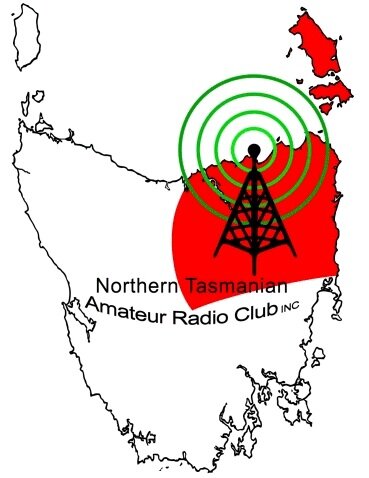Broadcast - 27 August 2023
As this item was penned late on Friday, the NTARC Safety Communications crew has already travelled to Santarena Park at Scottsdale, to prepare for Saturday’s Equine Endurance Ride. We have established our Ride Base, set up 2 meter and 70cm repeaters for voice and data communications and trialled communications to field check points in readiness. If it is Sunday when you hear this then hopefully we have packed up and are making our way back to Launceston.
As mentioned in one of last month’s broadcasts, Andre’ VK7ZAB noticed a new RF signal about 206MHz. This was later identified to be the test transmissions of the ABC’s new Digital Audio Broadcasting Plus service for the Launceston area. Phil VK7ZPD soon tracked down an open source software programme called “wello.io” which is capable of decoding the signal. Various versions support differing operating systems and computers. Well Phil has done it again, not sure if he tracked it down or stumbled across it this time, but he located a pile of Sony DAB+ compatible radios that are brand new in boxes. Phil found them at a local recycling depot very near the NTARC club rooms at Rocherlea. They are less than one seventh their current retail price. At $20 you can’t go wrong with a standalone FM and DAB+ radio that has battery backup and automatically locks to the DAB stream, extracts data and configures time and date on the clock. I know of a dozen that have already been snapped up. So if you are interested in dabbling in digital radio and are a typical amateur, these certainly tick the “cost-effective box”.
Still on the broadcast theme, but now we change from the latest digital radio and head back to early analogue black and white video recording prior to VHS and Beta formats. So over to Andre’ VK7ZAB for a quick recap on one of the many diverse topics of conversation covered by club members over a drink.
At the last couple of morning teas there has been discussion of domestic Video Tape Recorders that came before the VHS and Beta systems. In particular Stephen, VK7SVG remembers the Philips N1500 system introduced in the early 1970s, being mainly seen in the education institutions before home use. Unlike the rectangular VHS cassettes, Philips used a square cassette, where one reel of tape sits on top of the other.
On the last club morning tea Lionel, VK7ZLB brought in a photo he took in the 1980s of the first broadcast Video Recorder in Adelaide, at the new Channel 7 TV station. It was made by RCA and had been installed in about 1959. This machine was not a free standing trolley style unit but occupied five full height equipment racks.
It was for black and white pictures and used 2 inch wide tape on separate spools, like a large reel to reel audio recorder. The audio and control tracks were recorded along the length of the tape, the same as audio recorders and used 15 inches per second tape speed. The video used a spinning head-wheel that had 4 video heads that swept across the width of tape and was commonly called the “Quad format”. The head-wheel spun at 15,000 RPM and used air bearings. Each head pass only laid down 16 lines of vision – so no paused freeze frames! To curve the tape around the section of the head-wheel a Vacuum guide system was used. Extra station equipment required was a cooling system for the all those thermionic valves, air compressor and a vacuum pump.
These machines were later replaced in the mid-1980s with compact and standalone recorders that used Type C format, a “Helical scan” method using one inch wide tapes. This is the type used in VHS and Beta domestic VCRs. The Helical scan allows full picture pause and variable speed forward and reverse. Note that 2 inch wide tape didn’t disappear, but lived on for use in the music and postproduction studios as the classic 24 track analogue recorder.
Thank you Andre’ for also contributing to the discussion information. From my school days, I remember the Shibaden, a black and white video recorder from the early 1970’s. It was a half inch width tape “reel to reel” unit using two 5 inch tape spools mounted at different heights with a helical scan head located between. They were replaced with the modern colour Philips machines. Video recording systems certainly have come a long way in size and picture quality.
Welcome back Nic VK7WW, to the Hosting reins of Wednesday night’s TestNet and TechNet sessions. Once again many thanks to Phil VK7ZPD for stepping in and holding the reins during Nic’s absence.
Equipment pictures are available on the NTARC Web site under “Blogs” for this broadcast. Now back to the house keeping.
UPCOMING EVENTS
The TestNet and TechNet session - Wednesday the 30th of August. TestNet/CW course on 3.580MHz from 7pm till 7.30pm…. and a TechNet on 3.567MHz from 7.30pm till about 8.30pm. Your host for the evening will be Phil VK7ZPD.
Coffee Morning - held every Friday in the NTARC Club rooms. Time is from 10am to noon and we look forward to seeing you all there. Why not pop in and join us for a cuppa, there is endless tea and coffee along with biscuits available for a donation.
The Club Technical night - The next session will be on Wednesday the 6th of September and will commence at the winter time of 6.30 pm through to about 10.00 pm, at the Club room Archer Street, Rocherlea.
FINALLY - A reminder to all members that if you have any items of news you would like added to our weekly roundup, no matter how trivial, then please email them to the Secretary at the following address news@ntarc.net all items to be received no later than 5pm on the Friday prior to the Broadcast.
That’s all folks,
73 from Stefan, VK7ZSB, Secretary NTARC Inc.




